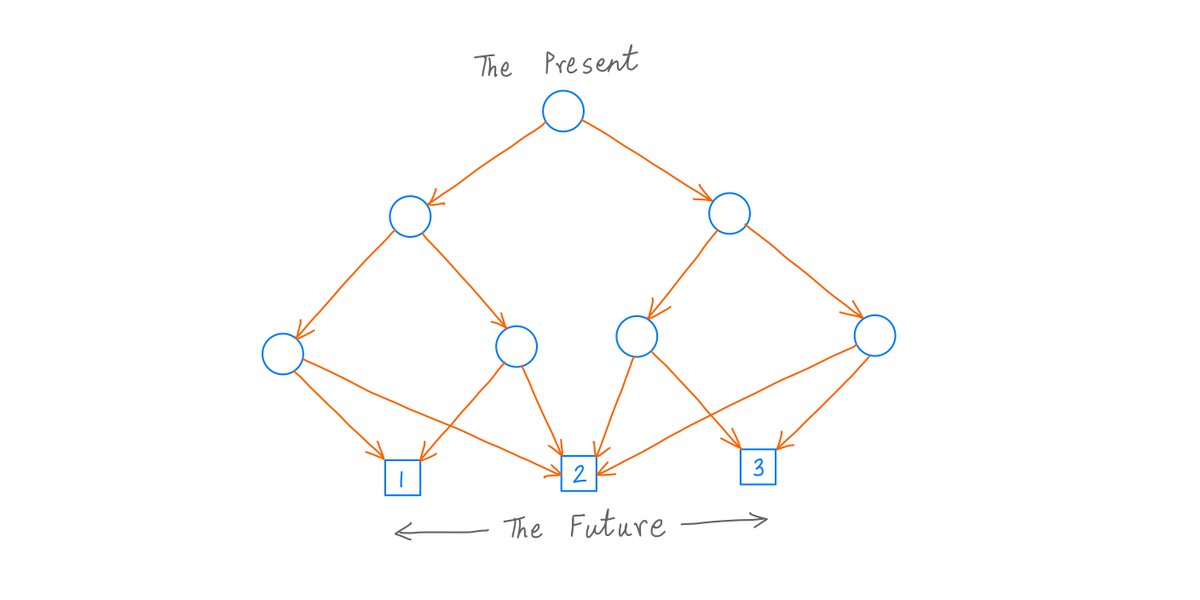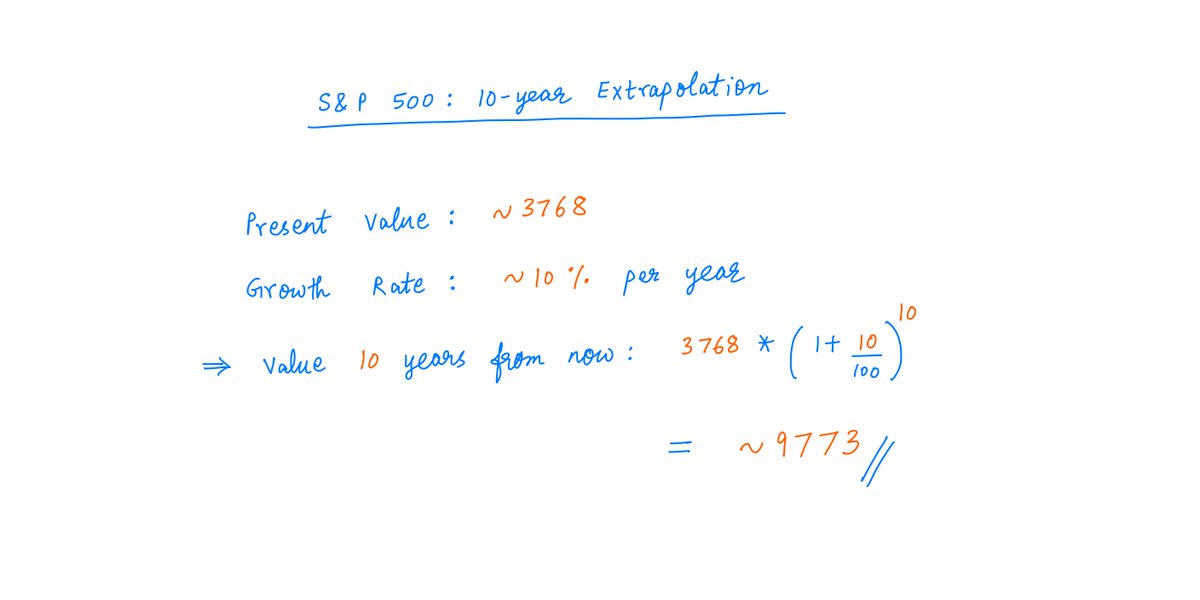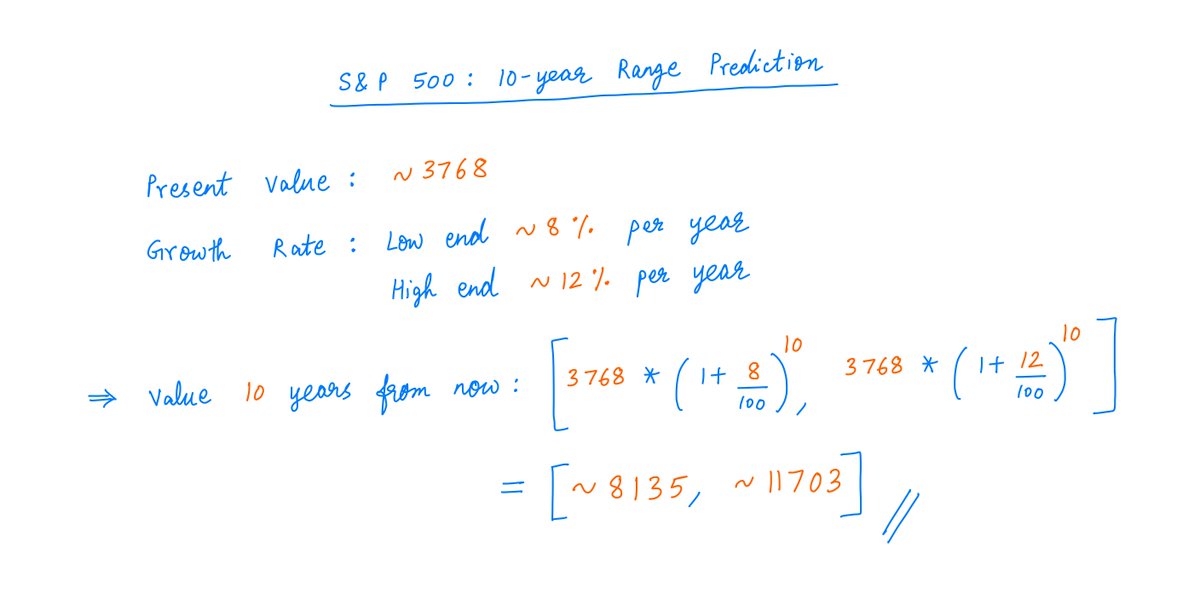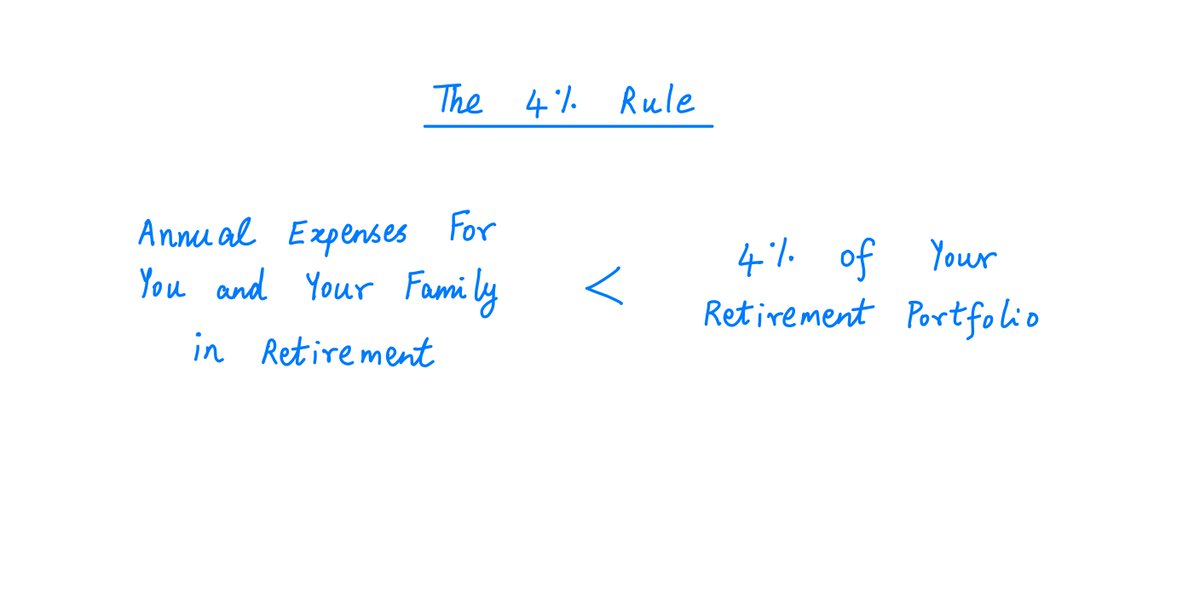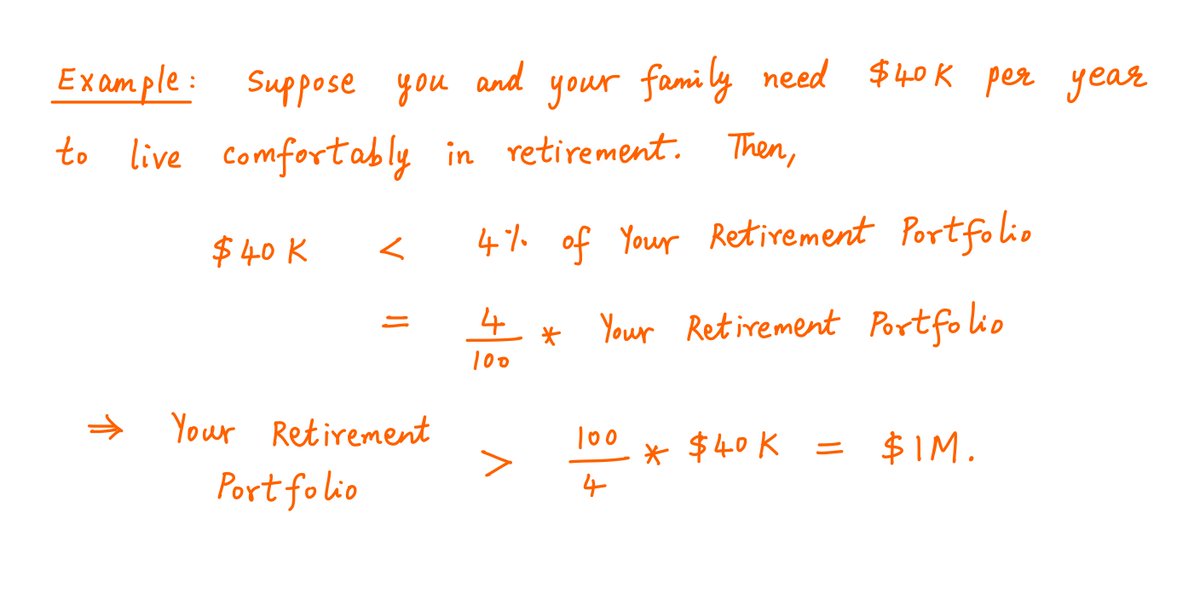2/
Suppose we have an investment opportunity.
This could be buying a stock, a bond, a private business, etc.
Let's say this opportunity will return $1M in cash to us after 1 year.
And not just that. This $1M will grow at 10% per year for the next 9 years, and 3% thereafter.
3/
This is a classic "cash flow model" that finance-y folk use all the time.
We have a business that promises to grow quickly for a while (in this case, at 10% per year for the next 10 years or so).
But after that, growth slows to a "terminal" crawl (3% per year).
4/
If we decide to buy this business, our "cash flows" from it will look like this over time:
5/
The question is: how much should we pay for this business?
Well, that depends on what kind of return we hope to get from buying it.
If we want a high return, we can't pay very much.
The lower the return we're willing to tolerate, the more we can pay.
6/
For example, suppose we want a 12% return on our investment.
Then, we can pay about $16.9M for the business.
But what if we're happy to make just 6%?
Then we can go as high as ~$56.4M.
7/
So, halving our return expectations (from 12% to 6%) allows us to up our price by more than 3x (from ~$16.9M to ~$56.4M).
The price we can pay is thus *very* sensitive to the return we want to get.
8/
How exactly do we calculate such price points (~$16.9M, ~$56.4M, etc.)?
We use a method called Discounted Cash Flow Analysis, or DCF for short.
Don't "OK boomer" me.
9/
The main idea behind a DCF is:
Cash that will come to us *in future* is worth less than cash in our pocket *today*.
So, we "discount" future cash flows.
And the higher the return we want, the steeper the discount we apply.
For more:
https://t.co/wFTLTkYIhk
10/
For example, if we take our business and discount its future cash flows at 12% (because we want a 12% return), we get a ~$16.9M price point.
But if we discount at 6%, our price point becomes ~$56.4M.
That's how we calculate the price we can pay based on the return we want.
11/
So, what kind of return should we target?
Obviously, the higher the better.
But if we demand a very high return, we'll only be able to pay a very low price.
And the guy selling the business to us may not be willing to take such a low price.
12/
This is especially true if other investors are willing to settle for lower returns than us.
They'll be willing to pay more for assets (stocks, bonds, private businesses, etc.) than us.
And so, we'll effectively be priced out of the market.
13/
So, we may have to "moderate" our return expectations, based on what other investors are willing to make on their money.
So the question becomes: what returns do investors generally settle for?
Interest rates play a big role in deciding this.
14/
The theory goes like this:
Generally, investors will settle for a "risk premium" over and above the "risk free interest rate".
Let's unpack this.
Suppose interest rates are at 1%.
That is, super safe investments like US Treasury bills give investors a 1% per year return.
15/
Understandably, investors will not be willing to take the same 1% return from *risky* assets like stocks.
After all, when there's a *risk free* way to get 1% (via Treasurys), why adopt a *risky* way to get the same 1% (via stocks)?
16/
So, investors demand a "premium" over and above the risk-free rate -- to compensate them for taking risks with things like stocks.
For example, if this "risk premium" is 5%, then investors will want to make 6% on stocks -- the 1% risk free rate plus the 5% risk premium.
17/
For investment-grade bonds, the risk premium may be lower than 5% -- because such bonds tend to be less risky than stocks.
And so on.
The risk premium is generally a function of how risky the underlying asset is perceived to be.
18/
So, that's the general economic theory.
1. Take the "risk free interest rate".
2. Tack on a "risk premium" that's appropriate for the asset in question.
3. That's the return investors will be willing to make on the asset.
4. That determines the market price of the asset.
19/
This theory has an important consequence.
As interest rates go up, asset prices generally go down.
And vice-versa.
As Buffett put it, interest rates are to asset prices what gravity is to matter.
Here's the logic:
20/
The other key variable that affects asset prices is inflation.
Let's say a burrito costs $10 today.
If inflation runs at 2% per year, and we'll get $1M 10 years from now, that $1M will buy us ~82K burritos.
But if inflation runs at 5% per year, that's only ~61K burritos.
21/
So, if investors expect inflation to be high, they won't pay very much for *future* cash flows.
Because these cash flows won't buy as many burritos in the future.
And if investors won't pay much, that tends to depress asset prices.
22/
For example, remember our business opportunity?
The one that'll give us $1M in Year 1, with 10% growth in Years 2 through 10, and 3% thereafter.
Here's how much we can pay for it in different inflation scenarios to get the same *real* return -- ie, constant burrito terms.
23/
Thus, the price we can pay for a fixed stream of cash flows tends to drop drastically with inflation!
For example, if we want a 6% real return, the price we can pay for our business drops more than 40% (from ~$56.4M to ~$31.7M) when inflation goes from 0 to just 2%.
24/
That's how much inflation can erode the present value of future cash flows.
But there's an important distinction here -- between businesses that have pricing power and those that don't.
If a business has pricing power, its cash flows can *grow* to compensate for inflation.
25/
For example, take a business like MasterCard.
Their revenues are (mostly) just a percentage of the dollar value of the transactions that go through their network.
With inflation, these transaction values will go up. But so will MasterCard's revenues.
That's pricing power.
26/
By contrast, take a business like Starbucks.
With inflation, the price of coffee beans, rent, labor, etc., will go up.
But Starbucks may only be able to pass on part of these rising costs to customers via price increases.
They may have less pricing power than MasterCard.
27/
So, here's the thing.
The value of a *fixed* stream of cash flows goes down with inflation.
But some businesses can *grow* their cash flows in response to inflation.
In inflationary environments, investors are understandably willing to pay more for such businesses.
28/
So far, we've seen how asset prices tend to be anti-correlated to both interest rates and inflation.
The last piece of the puzzle is how interest rates and inflation themselves drive each other.
29/
Generally, when there's a central bank (like the US Fed) running things, there's a *negative* feedback loop between interest rates and inflation.
Here's how it usually goes:
30/
Here's a summary of the key concepts in this thread.
As Buffett likes to say, in economics, we can never change just one thing. Whenever one thing changes, that causes other things to change as well.
So, it's important to understand the *interplay* between things.
31/
One final point.
For all the precision that accompanies DCFs and such, we must remember that economics is NOT an exact science.
Markets are complex, and driven by all kinds of events, feedback loops, and sentiments.
32/
The concepts in this thread are "directionally" correct -- most of the time, in the long run.
But they're not immediate cause and effect relationships.
So, don't ask me things like: the Fed raised interest rates last week. So, why are stocks up this week?
I don't know!
33/
If you're still with me, thank you very much!
Macro-economics is a hard subject to wrap our heads around.
But as investors, it's useful to be aware of the broad, general principles. I hope this thread helped with that.
Please stay safe. Enjoy your weekend!
/End









